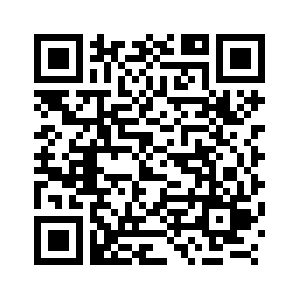HEFEI, Feb. 1 (Xinhua) -- A research team from the University of Science and Technology of China (USTC) has unveiled a groundbreaking biomimetic prosthetic hand with high dexterity, which is capable of combing hair, operating smartphones, and even performing intricate sign language gestures.
The lightweight prosthetic device, which replicates the functionality of a human hand, highlights a significant advancement in prosthetics and humanoid robots, offering hope to millions of amputees worldwide.
The study was published in Nature Communications, the USTC said on its official website.
A LEAP FORWARD IN PROSTHETICS
The human hand, with its 23 degrees of freedom (DOFs) -- the number of independent movements it can perform -- is a marvel of natural engineering, contributing to 54 percent of the body's overall functional movements despite weighing only about one-150th of the body's weight.
Traditional prosthetic hands, often powered by motors, struggle to balance weight and functionality. Most weigh more than 0.4 kilograms, causing discomfort while offering fewer than 10 DOFs. This limitation confines their ability to perform complex tasks, leading nearly half of users to abandon their prosthetic hands.
The USTC team addressed these challenges by using shape-memory alloys (SMAs) -- materials that "remember" their original shape and return to it when heated -- as artificial muscles.
Combined with a tendon-like transmission system, this innovative approach amplifies the driving force while reducing resistance.
The team also embedded 23 sensor units in the fingers and wrist for precise motion control and integrated 38 SMA actuators with a cooling module. The result is a prosthetic hand weighing just 0.37 kilograms, lighter than the average human hand, yet capable of 19 active DOFs.
HIGH DEXTERITY AND VERSATILITY
According to the research team, the prosthetic hand demonstrates remarkable dexterity, enabling it to perform tasks such as combing hair, writing, shaking hands, handing out business cards, and even playing chess.
Its advanced design allows it to replicate 33 standard human grasping modes and six new, more complex ones, such as using scissors, operating smartphones, and performing intricate sign language gestures.
In clinical tests, a 60-year-old female amputee mastered the device within half a day, successfully completing tasks from the clinically validated hand function test -- Southampton Hand Assessment Procedure (SHAP) -- and the Wolf Motor Function Test (WMFT), which measures upper extremity motor abilities.
Its integration with voice recognition technology sets the USTC prosthetic hand apart. It supports 60 languages and 20 dialects with 95 percent accuracy and millisecond-level response times.
This user-friendly interface makes it accessible to a wide range of users, particularly amputees, according to the research team.
Compared to similar projects globally, the USTC team's design stands out for its high DOFs, lightweight construction, and advanced sensory feedback.
The USTC team's innovation holds immense promise for both prosthetics and humanoid robotics, according to the research team.
Its high adaptability opens up a wide range of practical applications across multiple fields, including specialized operations in hazardous environments such as nuclear power plant maintenance or deep-sea equipment repair, medical rehabilitation, flexible manufacturing in high-precision production lines, and home services. ■



